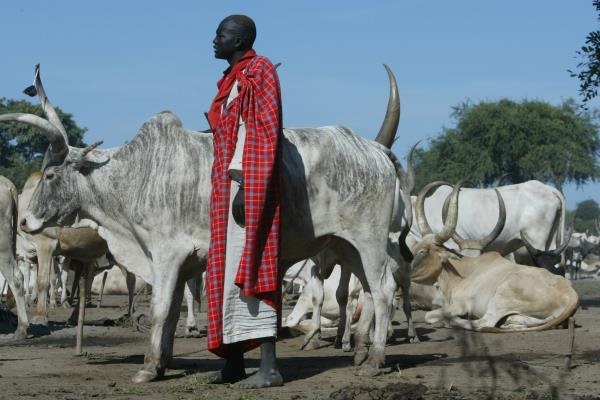Progress made in stopping decline of livestock genetic diversity
24 October 2012, Rome - While many countries are taking action to halt the erosion of livestock genetic resources, crucial for food and agriculture, a substantial gap remains that needs to be urgently addressed.
Reports from 80 countries on the progress made in implementing the Global Plan of Action for Animal Genetic Resources were presented today at an international conference.
The reports show that governments are beginning to put programmes into place to reverse the alarming decline in the numbers of indigenous livestock breeds.
Representatives from almost 100 countries are attending the Intergovernmental Technical Working Group on Animal Genetic Resources for Food and Agriculture (24-26 October) to review the implementation of the Global Plan of Action for Animal Genetic Resources. The Plan was adopted in 2007 with the objective of improving the management of the world's livestock biodiversity.
"The encouraging news is that on average the countries that submitted reports have begun to implement about half the actions agreed under the Global Plan of Action ranging from conservation schemes to surveys of livestock numbers, to the development of policies and legal frameworks addressing livestock biodiversity," said Irene Hoffmann, Chief of FAO's Animal Genetic Resources Branch.
But progress has been more marked in developed countries with many countries in Africa, the Near East and Latin America and the Caribbean still lagging behind.
The Near East is regarded as one of the cradles of livestock diversity. It was here that several species, including cattle, sheep, goats and dromedary camels, were first domesticated. Africa, with its diverse tropical and subtropical environments, is another important hotspot of diversity.
Indigenous breeds are important in agriculture because they are adapted to often harsh local conditions, contain unique genetic material important for breeding programmes and are often a livelihood bastion for poor households because they are easier to keep than exotic breeds. In a world threatened by climate change, breeds that are resistant to drought, extreme heat or tropical diseases are of major potential importance.
22 percent of breeds at risk of extinction
According to the latest available figures, about 22 percent of the world's livestock breeds are still classified as being at risk of extinction, although breed population figures are often unreported or out of date, making the true state of livestock diversity difficult to estimate.
Despite the generally limited amount of progress made in developing regions, the country reports indicate that some examples of more active implementation can be found in every region of the world.
Reporting countries from Asia are relatively well advanced in establishing conservation schemes for their threatened breeds. In Africa and Latin America, pockets of national success are reported in almost all the priority areas of the Global Plan of Action.
"There are about 45 countries that are preparing, or have already prepared, national strategies and action plans for their animal genetic resources, and about half of these are developing countries," said Hoffmann.
Projects to be launched
The Governments of Germany, Norway and Switzerland contributed more than $1 million to an FAO Trust Account to support the Global Plan of Action's implementation. FAO announced the first eight projects involving 22 countries to improve the management of animal genetic resources.
Countries of former Yugoslavia will join with Albania and Bulgaria to conserve the threatened Busha breed of cattle; Ethiopia, Kenya and Uganda will collaborate in improving the management of their indigenous chicken genetic resources; Bolivia and Peru will work together to implement breeding projects for llamas; a regional project in the Southwest Pacific region will establish conservation centres for chickens and pigs in the Cook Islands, Fiji and Niue; Algeria and Morocco will collaborate in the conservation of the Béni Guil sheep breed; and a project in the Gambia, Guinea, Mali and Senegal will investigate the impact of mobile livestock production on the management of genetic diversity.
In addition, single-country projects will be implemented in Mozambique and Togo, focusing on cattle and chicken genetic resources respectively.
